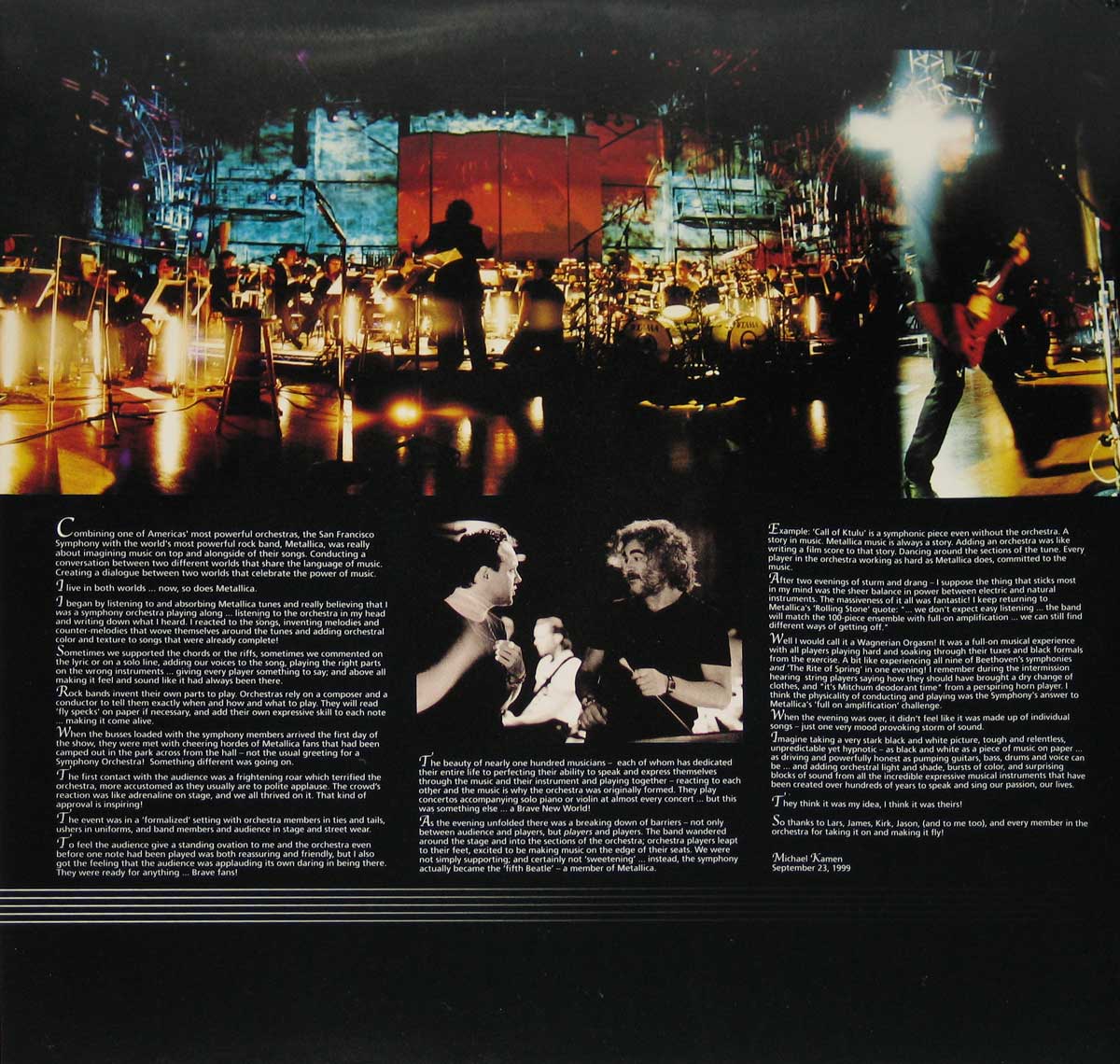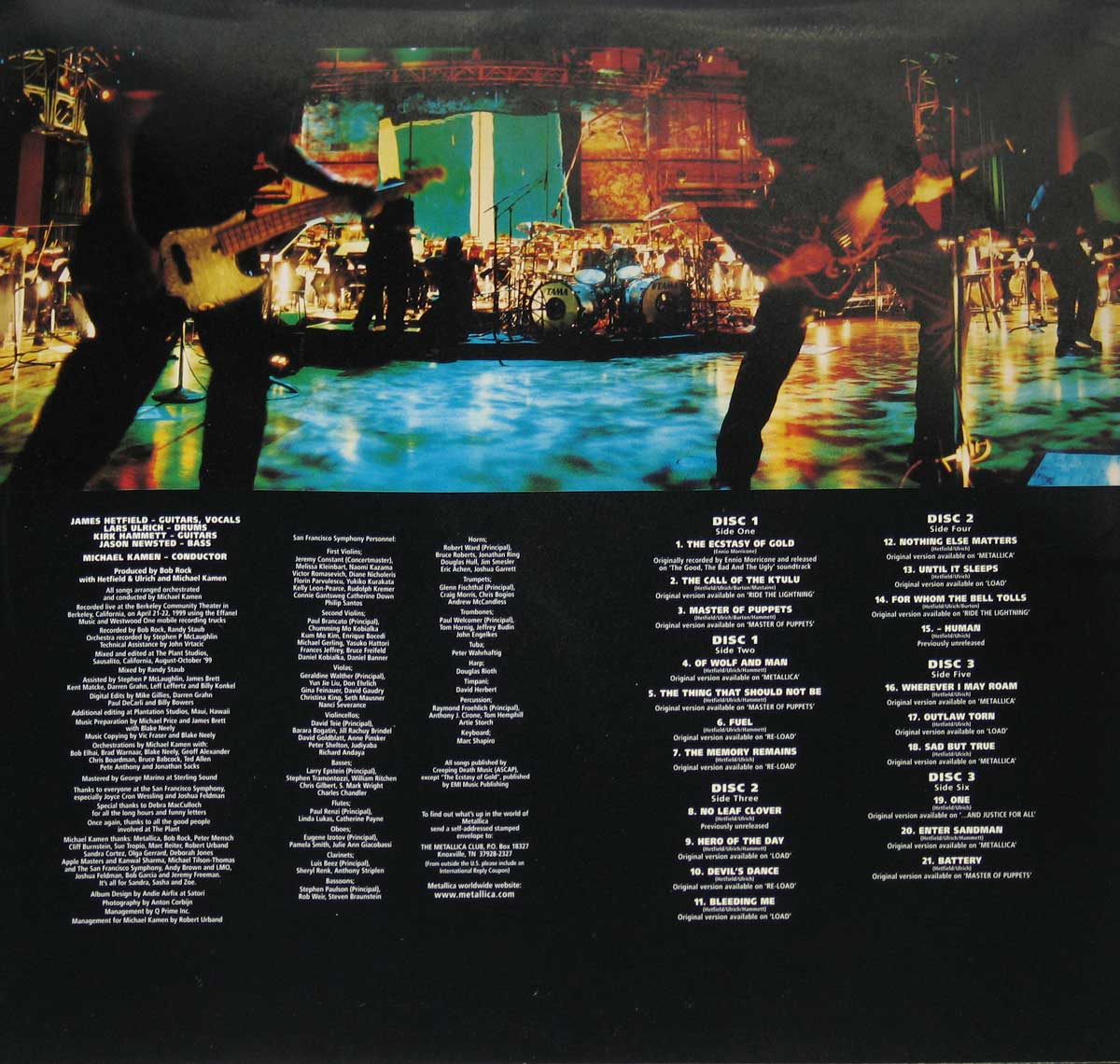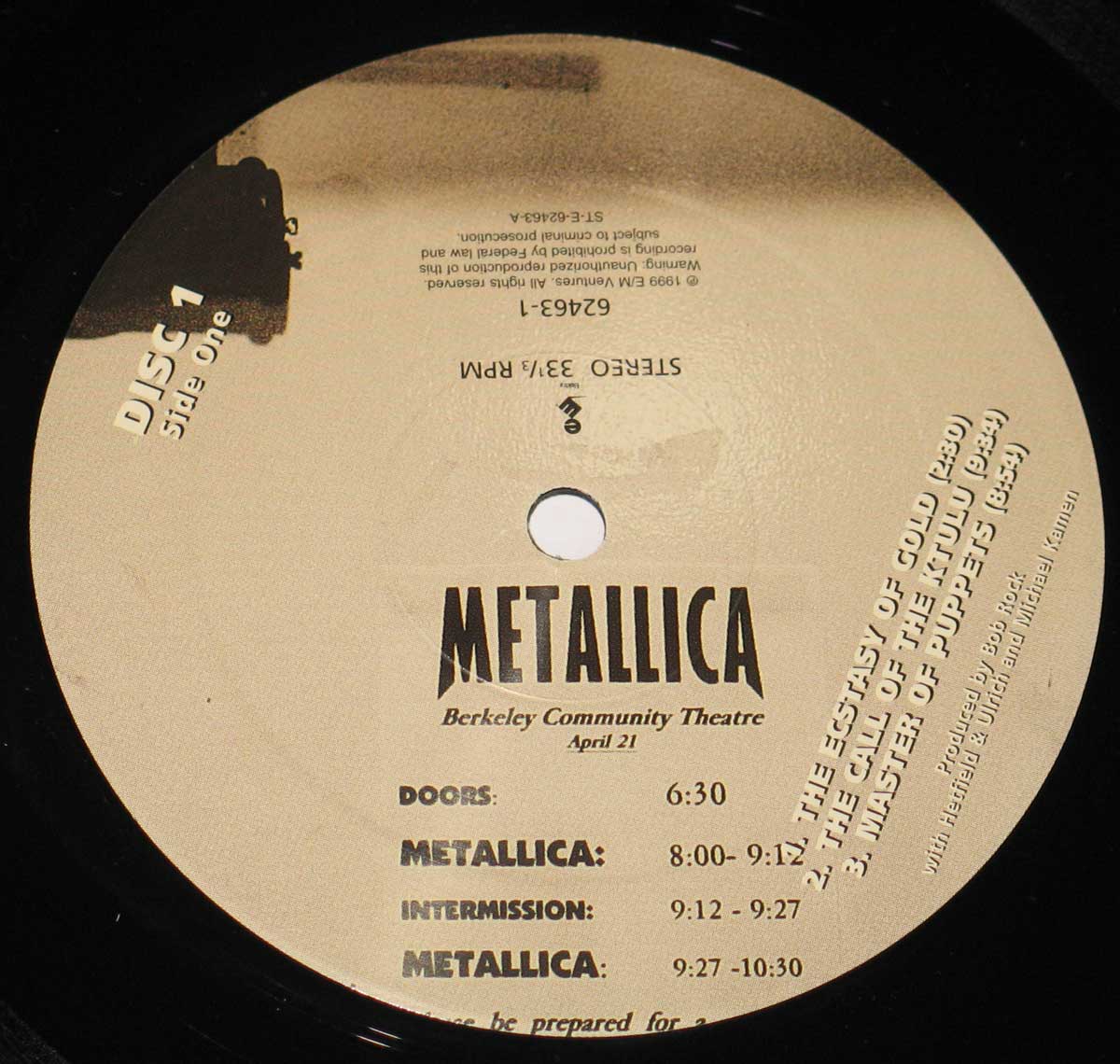Metallica S&M – When Metal Roared Through the Halls of Symphony Album Description:
Historical Context: A Collision of Worlds
In the spring of 1999, Metallica—already titans of thrash and global stadium heroes—took the boldest step of their career. They invited the San Francisco Symphony to the venerable Berkeley Community Theatre on April 21 and 22, pairing thunderous electric riffs with lush orchestral swells. What emerged was S&M (“Symphony and Metallica”), an audacious hybrid that shattered genre boundaries and electrified both diehard metalheads and classical loyalists alike.
Musical Exploration: Symphonic Threads Weaving Through Metal
At the heart of the fusion was arranger and conductor Michael Kamen, who had pressed Metallica toward orchestral collaboration years earlier after connecting with them at the Grammys. His arrangements didn't simply layer strings beneath the band—they conversed with the riffs, conjuring countermelodies and orchestral hues that felt built-in, as if these songs had always harbored symphonic life.
Metallica dipped into their catalog—from the thunderous “Master of Puppets” and ominous “The Thing That Should Not Be” to the emotive quiet storm of “Nothing Else Matters”—recasting them through a grand, cinematic lens. They also debuted two new pieces: “-Human” and “No Leaf Clover.” The latter, with its orchestral intro and chorus-versus-distortion dynamic, became a radio staple, holding the top spot on mainstream rock charts for weeks.
Key Musicians & Unique Contributions
The classic lineup—James Hetfield (vocals, rhythm guitar), Lars Ulrich (drums), Kirk Hammett (lead guitar), and Jason Newsted (bass)—stood at the crossroads. This was Newsted’s final appearance with the band. But the real otherworldly twist came from Kamen. His orchestral palette became a fifth member: he supported riffs, commented on lyrics, and became entwined with the band’s sonic identity, not as an add-on, but as a true partner in sound.
Band Historical Events & Scraps of Controversy
Metallica had always flirted with classical elements—thanks in part to Cliff Burton’s early melodic instincts—but S&M was full immersion. Some purists balked, decrying “This isn’t real Metallica.” Yet Metallica embraced that tension: they didn't hedge their power with strings—they met it head-on, matching every crescendo.
Not long after, internal tensions boiled over. By 2001, bassist Jason Newsted departed amid emotional and creative strain—making this orchestral venture all the more poignant as a final collective statement. Meanwhile, Metallica would soon be embroiled in the Napster saga, grappling with the seismic cultural shifts of the digital era. S&M thus stands lodged between realms—creative communion and incoming chaos.

























